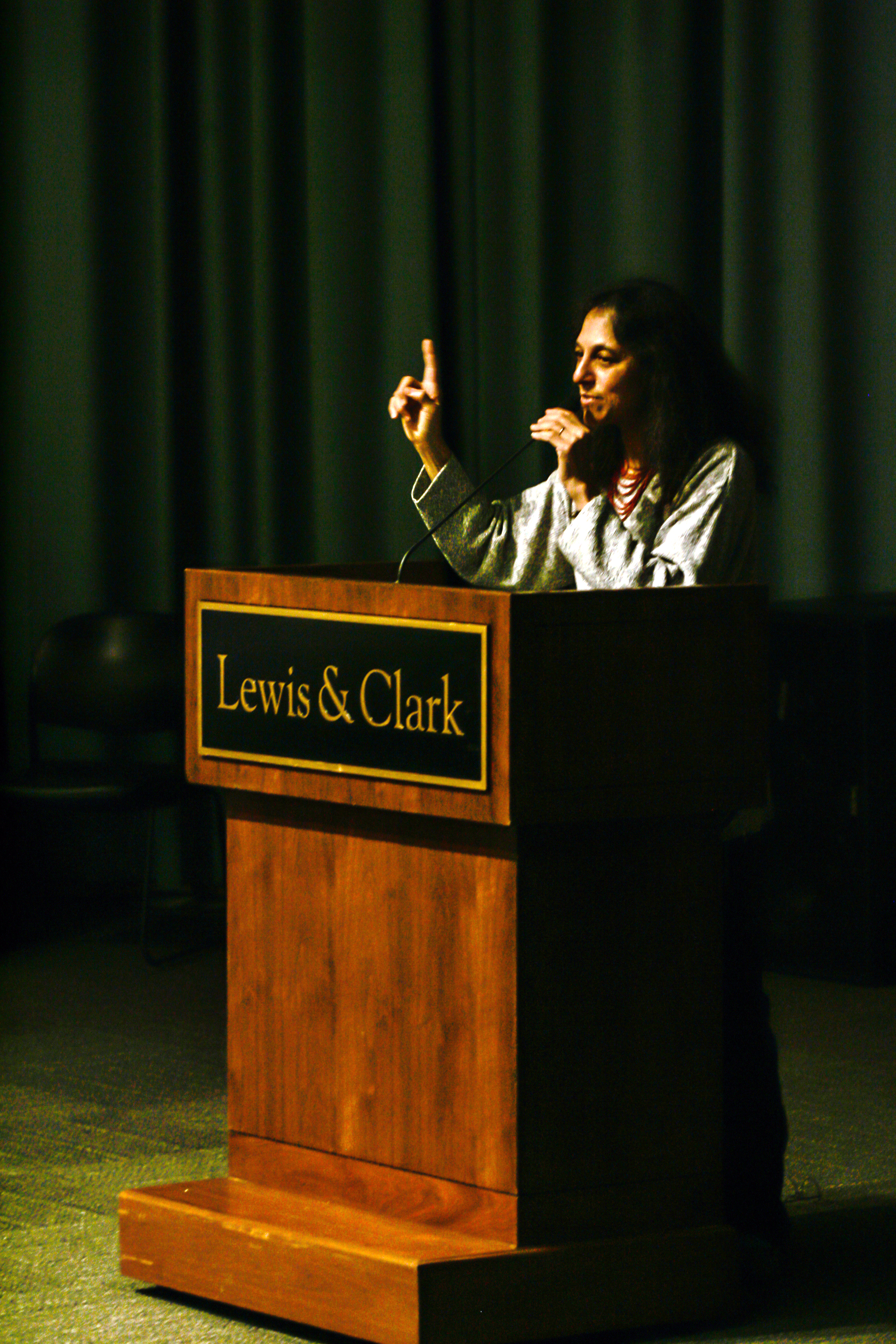
By Emma Cranston /// Features Editor
What do forest canopies and solitarily confined incarcerates have in common? Dr. Nalini Nadkarni. Though Nadkarni visited Lewis & Clark on April 1 under the guise of an experienced biologist–she’s written over a hundred scientific articles and three scholarly books–she steered clear of the calculated academia of her colleagues. Instead, Nadkarni chose to focus on her communal influence and ability to unite seemingly specific ecological values with larger social values.
Currently the director of the Center for Science and Mathematics Education at the University of Utah, Nadkarni has spent the past thirty years doing canopy research in forests from the Pacific Northwest to the Amazon. She is described as the “queen of canopy research.” She has worked to incorporate people of all backgrounds in her findings and to ultimately expand the reach of scientific discussion.
At her talk, Nadkarni spoke about expansion in her own work, explaining how she managed to reorganize the importance of the canopy into four key spheres of societal living: recreational, aesthetic, religion and social justice. Through this process of reorganization, Nadkarni used pre-existing passions in the greater public as a means of entry for her own scientific knowledge.
In order to present her research in a “recreational,” or more ‘child-friendly’ light, Nadkarni created “Treetop Barbie.” Despite her product design being turned down by the actual Barbie Manufacturers, Nadkarni has managed to market the doll by collecting old Barbies from Goodwill and enlisting volunteers to sew ‘canopy-researcher’ outfits for the Barbies.
The dolls are sold with a pamphlet detailing important canopy mosses and lichens, in the hopes of uniting information with play. In addition, Nadkarni has worked with athletes and professors at the University of Utah to create sports posters modeling mathematical concepts, and invited those professors to P.E. classes around Salt Lake City.
The next branch she pointed to was the “aesthetic” and she described hosting conferences where she invited artists and musicians to the canopy. These guests had the opportunity to perform research alongside Nadkarni and her colleagues, and were later able to create works of art that embodied the concepts they had learned. The third subset Nadkarni addressed was that of “religion” and she explained that she had searched through multiple religious texts in order to find tree-relevant scriptures, creating a sermon on trees and spirituality. She went on to explain that this presentation largely omitted her scientific research, aiming instead to address trees from a holistic viewpoint. While this may seem to contradict her findings, this decision to rework her modern, and implicitly secular ideals into something with which people may find an emotive understanding only proves her dedication to her work.
The final sphere that Nadkarni addressed was that of “social justice.” She rooted her experience with social justice in her involvement combating moss-poaching. Nadkarni initially hypothesized that if she could learn to grow moss, she could correct the problem of poaching. However, she quickly realized that the task would be too great for her to complete alone. Thus, she decided to incorporate another group in her work, eventually turning to the prison system. Nadkarni realized that because of their confinement, incarcerated people often relished the opportunity to work with nature. By offering them that opportunity, she was able to involve an extremely grateful, but otherwise marginalized group of people, as well as grow a substantial amount of moss for her research. Since then, Nadkarni has moved towards working with more incarcerated women, and people sentenced to solitary confinement, as well as initiated her own “Science in Prison” lecture series.
By marketing her research to unconventional audiences, Nadkarni was able to reach the people who really needed her. This process of community outreach has not only broadened her work, but also furthered the reach of science itself. However, despite her success, Dr. Nadkarni discourages students from looking at her path as a rigid guide to their future, and ultimately points to her experience as the celebration of possibility. Drawing on the example of a bowl of “spaghetti sauce,” she explained how there is almost never one perfect route from point A to point B. Instead, Nadkarni offered the idea that we seem to float through life as meatballs, often sinking, but sometimes suddenly rocketed to the surface. She used this image to nullify the fear that surrounds the uncertain, hoping instead to inspire students to harness the malleability of their future. With this in mind, Nadkarni ended her speech by encouraging students to follow their passions, but warned that they must also remain sensitive to those of their peers and population in order to better understand how to effectively communicate with and involve their community.
Subscribe to the Mossy Log Newsletter
Stay up to date with the goings-on at Lewis & Clark! Get the top stories or your favorite section delivered to your inbox whenever we release a new issue.

Leave a Reply